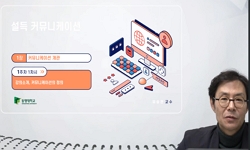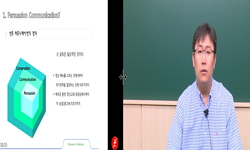최근에 대두되고 있는 체화된 인지는 신체적 경험을 하나의 수단으로써 활용하여 정보를 처리 및 기억하고 표상화 하는 것이다. 이 관점에 의하면, 신체적 상태나 지각 또는 경험의 시뮬레...
http://chineseinput.net/에서 pinyin(병음)방식으로 중국어를 변환할 수 있습니다.
변환된 중국어를 복사하여 사용하시면 됩니다.
- 中文 을 입력하시려면 zhongwen을 입력하시고 space를누르시면됩니다.
- 北京 을 입력하시려면 beijing을 입력하시고 space를 누르시면 됩니다.
https://www.riss.kr/link?id=A100089718
- 저자
- 발행기관
- 학술지명
- 권호사항
-
발행연도
2013
-
작성언어
Korean
-
주제어
체화된 인지 ; 체현 ; 머리움직임 ; 목표 관련성 ; 설득 ; Embodied cognition ; Embodiment ; Overt head movements ; Goal-relevancy ; Persuasion
-
등재정보
KCI등재
-
자료형태
학술저널
- 발행기관 URL
-
수록면
45-68(24쪽)
-
KCI 피인용횟수
10
- 제공처
- 소장기관
-
0
상세조회 -
0
다운로드
부가정보
국문 초록 (Abstract)
최근에 대두되고 있는 체화된 인지는 신체적 경험을 하나의 수단으로써 활용하여 정보를 처리 및 기억하고 표상화 하는 것이다. 이 관점에 의하면, 신체적 상태나 지각 또는 경험의 시뮬레이션이 인지적 처리에 영향을 주며, 신체-마음-두뇌는 강력하게 유기적으로 연결되어 있다. 본 연구는 체화된 인지가 설득에 미치는 영향을 살펴보고, 이 관계가 목표 관련성에 의해 조절됨을 보였다. 우선, 본 연구는 체화된 인지에 관한 선행 연구들을 통하여 다양한 맥락에서 진행되어 온 체화된 인지의 영향을 살펴본 후, 온라인 체현과 오프라인 체현으로 나누어 각각에 대해 구체적으로 고찰하였다. 이후, 온라인 체현 중 특히 머리움직임의 영향에 주목해 머리움직임과 설득의 관계를 다룬 문헌들을 살펴보았다. 그리고 머리움직임을 통한 체현이 설득에 미치는 영향을 목표 관련성이 조절할 수 있음에 주목하고, 목표와 목표 관련성이 소비자 행동에서 갖고 있는 의미를 검토하였다. 가상의 시나리오와 광고를 사용하여 머리움직임(끄덕거림 vs. 가로젓기) × 목표 관련성(높음 vs. 낮음) × 메시지 강도(강함 vs. 약함) 설계의 실험이 진행되었다. 그 결과, 머리움직임과 목표 관련성의 주 효과가 유의하였으며, 변수 간 상호 작용 효과도 나타났다. 구체적으로, 목표 관련성이 높을 경우, 끄덕거림 그룹과 가로젓기 그룹 모두 강한(vs. 약한) 메시지에 더 설득되었다. 그런데 목표 관련성이 낮을 경우에서는, 끄덕거림 그룹은 강한 메시지에서 약한 메시지보다 더 설득되었지만, 가로젓기 그룹은 오히려 강한 메시지보다 약한 메시지에 더 설득됨이 나타났다. 한편 붓스트랩핑 테스트를 통해 머리움직임이 설득에 미치는 영향에서 무드가 매개 역할을 하지 않음이 보였다. 실험 결과를 바탕으로 본 연구의 학문적 및 실무적 시사점이 논의되었다. 마지막으로, 향후 연구를 위한 아이디어와 방향성이 제시되었다.
다국어 초록 (Multilingual Abstract)
According to the perspective of embodied cognition, actual bodily state and perception and simulations of experience influence cognitive processing via brain`s modality-specific system. Current research focuses on the effect of embodiment (e.g., overt...
According to the perspective of embodied cognition, actual bodily state and perception and simulations of experience influence cognitive processing via brain`s modality-specific system. Current research focuses on the effect of embodiment (e.g., overt head movements) on persuasion. Specifically, this research is interested in moderating effect of goal-relevancy. The results of 2 (Overt head movements: nodding vs. shaking) × 2 (Goal-relevancy: high vs. low) × 2 (Message strength: strong vs. weak) between-subjects design show that nodding (vs. shaking) group and goal-relevant (vs. goal-irrelevant) group are more persuaded by experimental stimuli. More specifically, under goal-relevant condition, both nodding and shaking groups are more persuaded by strong (vs. weak) message. However, goal-irrelevant condition, the patterns of persuasion between nodding and shaking groups are not consistent. In this condition, nodding participants are more persuaded when they are exposed to strong (vs. weak) message, whereas shaking participants are less persuaded when they are exposed to strong (vs. weak) message. Additionally, bootstrapping tests show that mood does not underlie the effect of overt head movements on persuasion. Theoretical implications and the applications are discussed. Finally, the authors propose ideas and directions for further research.
참고문헌 (Reference)
1 Briñol, Pablo, "mbodied Validation: Our Body can Change and also Validate our Thoughts, In Social Metacognition" Psychology Press 219-240, 2012
2 Schubert, Thomas W., "Your Highness : Vertical Positions as Perceptual Symbols of Power" 89 (89): 1-21, 2005
3 Shah, James Y., "When Opportunity Knocks : Bottom-up Priming of Goals by Means and its Effects on Self-regulation" 84 (84): 1109-1127, 2003
4 Casasanto, Daniel, "When Left is ‘Right’ Motor Fluency Shapes Abstract Concepts" 22 (22): 419-422, 2011
5 Glenberg, Arthur M., "What Memory is for : Creating Meaning in the Service of Action" 20 (20): 1-55, 1997
6 Bargh, John A., "What Have We been Priming All These Years? On the Development, Mechanisms, and Ecology of Nonconscious Social Behavior" 36 (36): 147-168, 2006
7 Dimberg, Ulf, "Unconscious Facial Reactions to Emotional Facial Expressions" 11 (11): 86-89, 2000
8 Elder, Ryan S., "The ‘Visual Depiction Effect’ in Advertising : Facilitating Embodied Mental Simulation Through Product Orientation" 38 (38): 988-1003, 2012
9 Tom, Gail, "The Role of Overt Head Movement in the Formation of Affect" 12 (12): 281-289, 1991
10 Tom, Gail, "The Role of Overt Head Movement and Attention in Persuasion" 140 (140): 247-253, 2006
1 Briñol, Pablo, "mbodied Validation: Our Body can Change and also Validate our Thoughts, In Social Metacognition" Psychology Press 219-240, 2012
2 Schubert, Thomas W., "Your Highness : Vertical Positions as Perceptual Symbols of Power" 89 (89): 1-21, 2005
3 Shah, James Y., "When Opportunity Knocks : Bottom-up Priming of Goals by Means and its Effects on Self-regulation" 84 (84): 1109-1127, 2003
4 Casasanto, Daniel, "When Left is ‘Right’ Motor Fluency Shapes Abstract Concepts" 22 (22): 419-422, 2011
5 Glenberg, Arthur M., "What Memory is for : Creating Meaning in the Service of Action" 20 (20): 1-55, 1997
6 Bargh, John A., "What Have We been Priming All These Years? On the Development, Mechanisms, and Ecology of Nonconscious Social Behavior" 36 (36): 147-168, 2006
7 Dimberg, Ulf, "Unconscious Facial Reactions to Emotional Facial Expressions" 11 (11): 86-89, 2000
8 Elder, Ryan S., "The ‘Visual Depiction Effect’ in Advertising : Facilitating Embodied Mental Simulation Through Product Orientation" 38 (38): 988-1003, 2012
9 Tom, Gail, "The Role of Overt Head Movement in the Formation of Affect" 12 (12): 281-289, 1991
10 Tom, Gail, "The Role of Overt Head Movement and Attention in Persuasion" 140 (140): 247-253, 2006
11 Tourangeau, Roger, "The Role of Facial Response in the Experience of Emotion" 37 (37): 1519-1531, 1979
12 Cacioppo, John T., "The Need for Cognition" 42 (42): 116-131, 1982
13 Markman, Arthur B., "The Influence of Goals on Value and Choice" 39 (39): 97-128, 2000
14 Schubert, Thomas W., "The Embodied Self : Making a Fist Enhances Men’s Power Related Self-conceptions" 45 (45): 828-834, 2009
15 Wells, Gary L., "The Effects of Overt Head Movements on Persuasion: Compatibility and Incompatibility of Responses" 1 (1): 219-230, 1980
16 Petty, Richard E., "The Effects of Involvement on Responses to Argument Quantity and Quality: Central and Peripheral Routes to Persuasion" 46 (46): 69-84, 1984
17 Briñol, Pablo, "The Effect of Message Recipients’ Power before and after Persuasion : A Selfvalidation Analysis" 93 (93): 1040-1053, 2007
18 Joy, Annamma, "Speaking of Art as Embodied Imagination : A Multisensory Approach to Understanding Aesthetic Experience" 30 (30): 259-282, 2003
19 Wilson, Margaret, "Six Views of Embodied Cognition" 9 (9): 625-636, 2002
20 Eelen, Jiska, "Situated Embodied Cognition : Monitoring Orientation Cues Affects Product Evaluation and Choice" 23 (23): 424-433, 2013
21 Laird, James D., "Self-attribution of Emotion: The Effects of Expressive Behavior on the Quality of Emotional Experience" 29 (29): 475-486, 1974
22 Preacher, Kristopher J., "SPSS and SAS Procedures for Estimating Indirect Effects in Simple Mediation Models" 36 (36): 717-731, 2004
23 Cacioppo, John. T., "Rudimentary Determinants of Attitudes : Classical Conditioning is more Effective When Prior Knowledge about the Attitude Stimulus is Low Than High" 28 (28): 207-233, 1992
24 Cacioppo, John T., "Rudimentary Determinants of Attitudes : Arm Flexion and Extension have Differential Effects on Attitudes" 65 (65): 5-17, 1993
25 Bem, Sacha, "Recent Changes in the Concept of Cognition" 6 (6): 449-469, 1996
26 Ping, Raedy M., "Reach for What You Like : The Body's Role in Shaping Preferences" 1 (1): 140-150, 2009
27 Lorraine Chen Idson, "Predicting the Intensity of Losses vs. Non-gains and Non-losses vs. Gains in Judging Fairness and Value : A Test of the Loss Aversion Explanation" 41 (41): 527-534, 2005
28 Guinote, Ana, "Power and Goal Pursuit" 33 (33): 1076-1087, 2007
29 Custer, Ruud, "Positive Affect as Implicit Motivator : On the Nonconscious Operation of Behavioral Goals" 89 (89): 129-142, 2005
30 Riskind, John H., "Physical Posture: Could it Have Regulatory or Feedback Effects on Motivation and Emotion?" 6 (6): 273-298, 1982
31 Lee, Angela Y., "Perspective Taking and Embodiment" 2010
32 Barsalou, Lawrence W., "Perceptual Symbol Systems" 22 (22): 577-660, 1999
33 Briñol, Pablo, "Overt Head Movements and Persuasion : A Self-validation Analysis" 84 (84): 1123-1139, 2003
34 Taylor, Shelly E., "On Inferring One’s Attitude from One’s Behavior : Some Delimiting Condition" 31 (31): 126-131, 1975
35 Thomas, Laura E., "Moving Eyes and Moving Thought : On the Spatial Compatibility between Eye Movements and Cognition" 14 (14): 663-668, 2007
36 Kruglanski, Arie W., "Motivated Closing of the Mind : ‘ Seizing’ and ‘Freezing’" 103 (103): 263-283, 1996
37 Galton, Francis, "Measurement of Character" 42 (42): 179-185, 1884
38 Rosa, Jose Antonio, "Keeping the Body in Mind: The Influence of Body Esteem and Body Boundary Aberration on Consumer Beliefs and Purchase Intentions" 16 (16): 79-91, 2006
39 Strack, F. Martin, "Inhibiting and Facilitating Conditions of the Human Smile: A Nonobtrusive Test of the Facial Feedback Hypothesis" 54 (54): 768-777, 1988
40 Biehal, Gabriel, "Informationpresentation Format and Learning Goals as Determinants of Consumers' Memory Retrieval and Choice Processes" 431-441, 1982
41 Föster, Jens, "Influence of Overt Head Movements on Memory for Valence Words: A Case of Conceptual-motor Compatibility" 71 (71): 421-430, 1996
42 Föster, Jens, "How Global versus Local Perception Fits Regulatory Focus" 16 (16): 631-636, 2005
43 Chandler, Jesse, "How Extending Your Middle Finger Affects Your Perception of Others : Learned Movements Influence Concept Accessibility" 45 (45): 123-128, 2009
44 Föster, Jens, "How Body Feedback Influences Consumers’ Evaluation of Products" 14 (14): 416-426, 2004
45 Labroo, Aparna A., "Half the Thrill is in the Chase: Twisted Inferences from Embodied Cognitions and Brand Evaluation" 37 (37): 143-158, 2010
46 Bargh, John A., "Goal and Intent: Goal-directed Thought and Behavior are often Unintentional" 1 (1): 248-251, 1990
47 Bagozzi, Richard P., "Goal Setting and Goal Striving in Consumer Behavior" 63 (63): 19-32, 1999
48 Beilock, Sian L., "Gesture Changes Thought by Grounding it in Action" 21 (21): 1605-1610, 2010
49 민동원, "From Thinking to Action: The Moderating Effect of Perspective Taking on Embodied Cognition" 한국마케팅학회 15 (15): 117-132, 2013
50 Hung, Iris W., "From Firm Muscles to Firm Willpower : Understanding the Role of Embodied Cognition in Self-regulation" 37 (37): 1046-1064, 2011
51 Zajonc, Robert B., "Feeling and Facial Efference: Implications of the Vascular Theory of Emotion" 96 (96): 395-416, 1989
52 Larsen, Randy J., "Facilitating the Furrowed Brow : An Unobtrusive Test of the Facial Feedback Hypothesis Applied to Unpleasant Affect" 6 (6): 321-338, 1992
53 Hawk, Skyler T., "Face the Noise : Embodied Responses to Nonverbal Vocalizations of Discrete Emotions" 102 (102): 796-814, 2012
54 Grant, Elizabeth R., "Eye Movements and Problem Solving Guiding Attention Guides Thought" 14 (14): 462-466, 2003
55 Duclos, Sandra E., "Emotion-specific Effects of Facial Expressions and Postures on Emotional Experience" 57 (57): 100-108, 1989
56 Reimann, Martin, "Embodiment in Judgment and Choice" 5 (5): 104-123, 2012
57 Niedenthal, Paula M., "Embodiment in Attitude, Social Perception, and Emotion" 9 (9): 184-211, 2005
58 Briñol, Pablo, "Embodied Persuasion: Fundamental Processes by which Bodily Responses can Impact Attitudes, In Embodied Grounding: Social, Cognitive, Affective, and Neuroscientific Approaches" Cambridge University Press 184-207, 2008
59 Chambon, Michel, "Embodied Perception with Others’ Bodies in Mind : Stereotype Priming Influence on the Perception of Spatial Environment" 45 (45): 283-287, 2009
60 Davis, Joshua Ian, "Embodied Cognition as a Practical Paradigm : Introduction to the Topic, The Future of Embodied Cognition" 4 (4): 485-691, 2012
61 Briñol, Pablo, "Embodied Attitude Change" 5 (5): 1039-1050, 2011
62 Follenfant, Alice, "Effect of Stereotypes Activation on Behavior : An Application in a Sport Setting" 55 (55): 121-129, 2005
63 Koo, Minjung, "Dynamics of self-regulation : How(un)Accomplished Goal Actions Affect Motivation" 94 (94): 183-195, 2008
64 Ballard, Dana H., "Deictic Codes for the Embodiment of Cognition" 20 (20): 723-742, 1997
65 Taylor, Shelley E., "Coping and the Simulation of Events" 7 (7): 174-194, 1989
66 Zhong, Chen-Bo, "Cold and Lonely does Social Exclusion Literally Feel Cold?" 19 (19): 838-842, 2008
67 Fishbach, Ayelet, "Be Better or Be Merry : How Mood Affects Self-control" 93 (93): 158-173, 2007
68 Bargh, John A., "Automaticity of Social Behavior: Direct Effects of Trait Construct and Stereotype Activation on Action" 71 (71): 230-244, 1996
69 Preacher, Kristopher J., "Asymptotic and Resampling Strategies for Assessing and Comparing Indirect Effects in Multiple Mediator Models" 40 (40): 879-891, 2008
70 Neumann, Roland, "Approach and Avoidance : The Influence of Proprioceptive and Exteroceptive Cues on Encoding of Affective Information" 79 (79): 39-48, 2000
71 Centerbar, David B., "Affective Incoherence : When Affective Concepts and Embodied Reactions Clash" 94 (94): 560-578, 2008
72 Goodwin, Charles, "Action and Embodiment within Situated Human Interaction" 32 (32): 1489-1522, 2000
동일학술지(권/호) 다른 논문
-
- 한국마케팅학회
- 이희태(Hee Tae Lee)
- 2013
- KCI등재
-
- 한국마케팅학회
- 박지미(Ji Mi Park)
- 2013
- KCI등재
-
- 한국마케팅학회
- 류가연(Ga Yeon Ryu)
- 2013
- KCI등재
-
매몰비용의 질(quality)이 소비자 선택에 미치는 영향
- 한국마케팅학회
- 박은영(Eun Young Park)
- 2013
- KCI등재
분석정보
인용정보 인용지수 설명보기
학술지 이력
| 연월일 | 이력구분 | 이력상세 | 등재구분 |
|---|---|---|---|
| 2026 | 평가예정 | 재인증평가 신청대상 (재인증) | |
| 2020-01-01 | 평가 | 등재학술지 유지 (재인증) |  |
| 2019-05-10 | 학회명변경 | 영문명 : 미등록 -> Korean Marketing Association |  |
| 2019-04-03 | 학술지명변경 | 외국어명 : Korean Marketing Review -> Korean Journal of Marketing |  |
| 2017-01-01 | 평가 | 등재학술지 유지 (계속평가) |  |
| 2013-01-01 | 평가 | 등재학술지 유지 (등재유지) |  |
| 2010-01-01 | 평가 | 등재학술지 유지 (등재유지) |  |
| 2008-01-01 | 평가 | 등재학술지 유지 (등재유지) |  |
| 2006-01-01 | 평가 | 등재학술지 유지 (등재유지) |  |
| 2003-01-01 | 평가 | 등재학술지 선정 (등재후보2차) |  |
| 2002-01-01 | 평가 | 등재후보 1차 PASS (등재후보1차) |  |
| 1999-07-01 | 평가 | 등재후보학술지 선정 (신규평가) |  |
학술지 인용정보
| 기준연도 | WOS-KCI 통합IF(2년) | KCIF(2년) | KCIF(3년) |
|---|---|---|---|
| 2016 | 1.93 | 1.93 | 1.95 |
| KCIF(4년) | KCIF(5년) | 중심성지수(3년) | 즉시성지수 |
| 2.03 | 1.94 | 4.016 | 0.3 |





 KCI
KCI DBpia
DBpia







